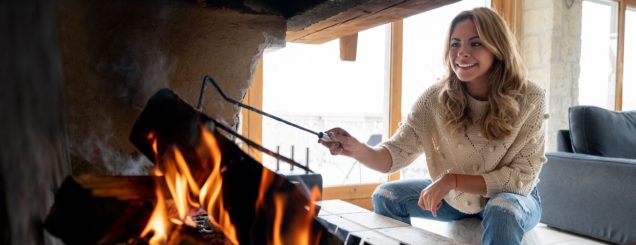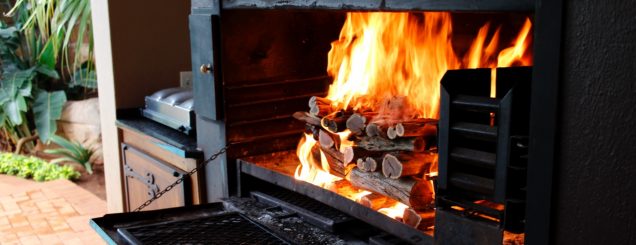Allchimneys offer a comprehensive chimney lining installation service. Our Team of HETAS registered professionals have installed every chimney liner imaginable. From lining a chimney for a wood burning stove to an open fire or a brick chimney lining for a condensing boiler flue system.
We are able to self-certify all domestic chimney lining installations thought the HETAS competent persons scheme and register your new chimney lining with HETAS and your local building control authority on your behalf.
Here are some of the applications where you may need a chimney liner fitted:
- Lining a chimney to eliminate flue gas leakage in your property
- A 125mm/150mm chimney liner for the connection to a wood burning stove or multi-fuel stove
- A solid fuel open fire or wood basket would require a 200mm, Class 1, Flexible Flue lining installed
- A gas fuel effect (GFE) appliance would require the installation of a 180mm diameter chimney liner
- A new commercial condensing boiler may need a new boiler flue system connected to a suitable chimney lining.

What We Do
If you have a problem with your current chimney lining, or you want a new stainless steel chimney liner installed, then you have come to the right place.
Allchimneys will start by carrying out an on-site chimney inspection. This includes smoke testing, accessing the roof to check the condition of your chimney pot and then checking the condition of your current chimney lining. We inspect the chimney stack and take measurements of the fireplace opening with relation to the stove and the relevant building regulations for the installation of solid fuel appliances.
One of our experts will then advise which Solid Fuel appliance is suitable and decide whether the existing brick chimney should be relined with a stainless steel flexible chimney liner.
To read more about Chimney Lining, see below or Contact us now

Do I need a new chimney lining installed for my new wood burner
With any solid fuel appliance building regulation states that there must be provision to sweep the chimney flue. A solid fuel appliance produces soot. The soot must be cleaned form the chimney system at regular intervals to prevent a chimney fire.
The connecting stove pipe from a wood burning appliance to a chimney system is typically 125mm in diameter. Should the appliance be DEFRA exempt then the general recommendation form the stove manufacturer would be to install a 125mm chimney liner. This would be installed from stove pipe connection to the top of chimney termination, the chimney pot.
By installing a chimney lining to the wood burning stove the benefits are as follows:
- Regardless of your domestic brick chimney age or condition, the chimney lining will contain the gases of combustion from the solid fuel appliance through the entire length of the chimney to termination. Giving you peace of mind that all exhaust gases and smoke cannot leak into the property.
- To a degree the cavity between the chimney internal brickwork and the newly installed chimney liner will have an insulating effect. However, this insulation can be increased by adding granular chimney insulation such as vermiculite. Insulating a chimney lining becomes more of an advantage when the chimney is situated on an outside wall, such a detached property. The external flue brickwork will become cold during the winter and cool the gas contained within the chimney lining.
- Sweeping/Cleaning a flue liner. A stove which has a chimney lining fitted is by far the easiest to clean. It most cases a stove installed without a flue lining is impossible to sweep correctly. Allchimneys are registered with NACS (The National Association of Chimney Sweeps – Membership number 11/757). When a stove is swept our chimney sweep passes the correct size chimney sweeping brush through the appliance to enter the stove pipe. The brush (normally 125mm in diameter/the same as the chimney lining installed) is then pushed through the full length of the S/S flex liner with special chimney sweeping rods. Because the brush is the same shape and size of the chimney lining all the internal surfaces are swept and all the debris falls within the lining to the appliance where it can be safely vacuumed away.

Why do I have grit or sand falling into my fireplace? Do I need my chimney lined?
Before the mid 1960’s the chimney lining or a brick built domestic chimney was rendered. Sometimes referred to as ‘parging’. As the chimney builder laid the bricks to build the flue’ he would render the inside face of the flue. Over time, rainwater and deposits from combustion such as soot decay the chimney lining. This chimney liner decay is seen at the base of the flue, the fireplace. Often in high winds or heavy rainfall a sand like substance will be found on the hearth or appliance.
This sand/grit deposit is your remaining chimney lining and is a sign that the chimney should be surveyed for potential leakages. A new chimney liner may be required. Safety is paramount.
